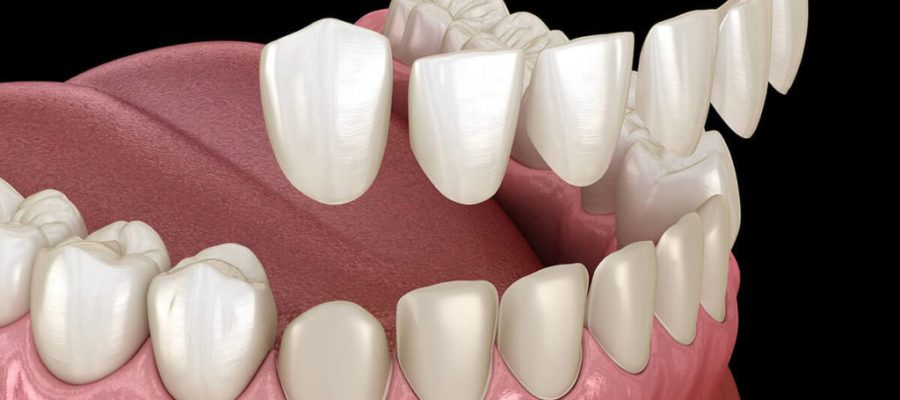
When it comes to enhancing your smile, choosing the right type of veneers is crucial. The debate between porcelain veneers vs composite veneers is common among dental patients looking for the best balance of aesthetics, durability, and cost. Both options offer unique benefits, but understanding their differences will help you make an informed decision that fits your needs and lifestyle.
In this article, we will explore the key advantages and disadvantages of porcelain veneers vs composite veneers, so you can decide which is better for you.
What Are Porcelain Veneers and Composite Veneers?
Before comparing their benefits, it’s important to understand what each type of veneer involves.
-
Porcelain veneers are thin, custom-made shells crafted from high-quality ceramic materials. They are designed to cover the front surface of your teeth and are known for their natural appearance and stain resistance.
-
Composite veneers are made from a tooth-colored resin that is applied and sculpted directly on your teeth by the dentist. They are less invasive and can usually be completed in one visit.

Durability and Longevity: Porcelain Veneers vs Composite Veneers
One of the most significant differences between porcelain veneers vs composite veneers is their durability.
-
Porcelain veneers typically last between 10 to 15 years with proper care, sometimes even longer. They are highly resistant to stains and wear, making them a popular choice for patients seeking a long-term solution.
-
Composite veneers, while more affordable, generally last around 5 to 7 years. They are more prone to chipping and staining over time, which may require repairs or replacements.
If you’re looking for a more permanent smile enhancement, porcelain veneers might be the better option.
Aesthetics and Natural Appearance
Both types of veneers can dramatically improve the appearance of your teeth, but there are aesthetic differences worth noting.
-
Porcelain veneers mimic the translucency and texture of natural teeth closely, offering a very lifelike appearance. They are custom-crafted in a dental lab, allowing for precise color matching and shape.
-
Composite veneers can look natural as well, but they may not have the same level of translucency or glossiness as porcelain. However, advances in composite materials have significantly improved their appearance in recent years.
For patients prioritizing a flawless, natural-looking smile, porcelain veneers often provide superior results.
Cost Comparison: Porcelain Veneers vs Composite Veneers
Cost is often a deciding factor between porcelain veneers vs composite veneers.
-
Porcelain veneers tend to be more expensive due to the materials used and the lab work involved. The higher initial cost can be justified by their longevity and aesthetic benefits.
-
Composite veneers are usually more budget-friendly, with less time required during dental visits. They are an excellent option for those seeking quicker and less costly cosmetic improvements.
Your choice might depend on your budget and how long you want the veneers to last.
Procedure Time and Invasiveness
Another consideration in the porcelain veneers vs composite veneers discussion is the procedure itself.
-
Porcelain veneers usually require two visits. During the first appointment, your teeth are prepared and impressions are taken. The veneers are fabricated in a lab, and then bonded in the second visit.
-
Composite veneers can often be completed in a single session, as the resin is applied and sculpted directly onto your teeth.
If you prefer faster results with less waiting, composite veneers might be more convenient.
Maintenance and Care
Proper care is essential for both types of veneers.
-
Porcelain veneers require regular brushing, flossing, and routine dental check-ups to maintain their appearance and function.
-
Composite veneers also need good oral hygiene but may require more frequent polishing or touch-ups due to their susceptibility to wear.
Regardless of your choice, maintaining good oral hygiene will extend the life of your veneers.
Which Is Better for You?
Deciding between porcelain veneers vs composite veneers depends on your priorities:
-
If you want a long-lasting, highly aesthetic smile and are willing to invest more time and money, porcelain veneers are likely the better choice.
-
If you prefer a quicker, more affordable solution with less initial investment, composite veneers may be ideal.
Consulting with a trusted cosmetic dentist will help tailor the best option to your unique dental needs.
Final Thoughts
Both porcelain veneers vs composite veneers have their unique advantages and can dramatically improve your smile. Understanding the differences in durability, aesthetics, cost, and procedure will empower you to make the right decision. At DRGO Smile Clinic, our expert team will guide you through every step to ensure you achieve a beautiful, confident smile tailored just for you.
